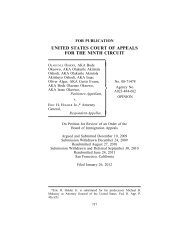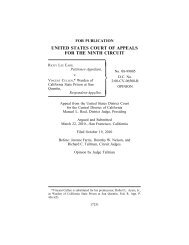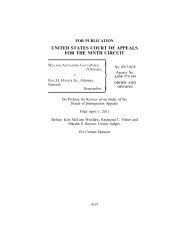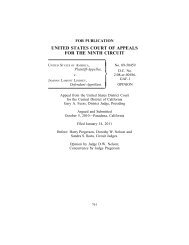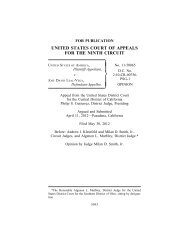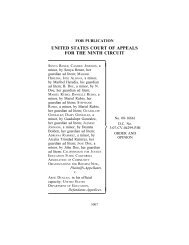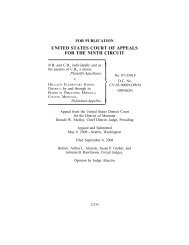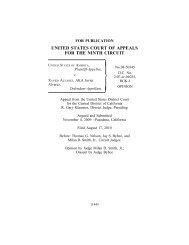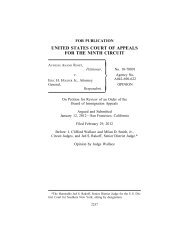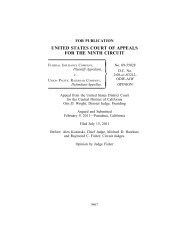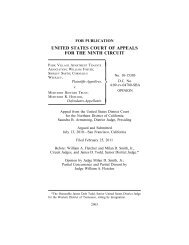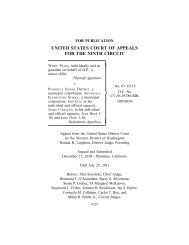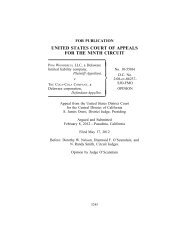kristin rossum v. deborah patrick - Ninth Circuit Court of Appeals
kristin rossum v. deborah patrick - Ninth Circuit Court of Appeals
kristin rossum v. deborah patrick - Ninth Circuit Court of Appeals
You also want an ePaper? Increase the reach of your titles
YUMPU automatically turns print PDFs into web optimized ePapers that Google loves.
17414 ROSSUM v. PATRICK<br />
ble. The medical and toxicological evidence suggested that de<br />
Villers could only have died from an overdose <strong>of</strong> fentanyl if<br />
he was administered the drug on multiple occasions throughout<br />
the day. If de Villers self-administered a large, single dose<br />
<strong>of</strong> fentanyl, then he would have died too rapidly for the bronchopneumonia<br />
to develop in his lungs and for the large quantity<br />
<strong>of</strong> urine to collect in his bladder. But de Villers could not<br />
have voluntarily taken multiple doses <strong>of</strong> fentanyl over the<br />
course <strong>of</strong> the day because in the last hours <strong>of</strong> his life, he was<br />
too comatose even to breathe properly, much less selfadminister<br />
fentanyl. In any event, administering the test for<br />
metabolites could have only proven the prosecution’s case<br />
wrong; it could in no way have harmed the defendant’s case. 10<br />
4. Comparison with Richter<br />
Respondent also attempts to draw factual parallels to Richter,<br />
where the Supreme <strong>Court</strong> found that it was reasonable for<br />
the state court to deny an ineffective assistance <strong>of</strong> counsel<br />
claim based on counsel’s failure to conduct forensic testing.<br />
In contrast to Rossum’s case, however, the failure to do forensic<br />
testing was not unreasonable in Richter because testing<br />
might have undermined the only plausible defense available<br />
to Richter, that the victim was killed in the cross fire <strong>of</strong> the<br />
co-defendant’s shooting battle, and not at Richter’s hands.<br />
131 S.Ct. at 789-90. Furthermore, the <strong>Court</strong> found “sufficient<br />
conventional circumstantial evidence pointing to Richter’s<br />
guilt.” Richter at 792.<br />
Rossum’s case, in contrast, is about forensic testing that<br />
would have been dispositive on the cause <strong>of</strong> death. The state’s<br />
case against Rossum pivoted entirely on the fentanyl finding.<br />
And unlike Richter, counsel’s performance with regard to this<br />
test could not reflect competent legal strategy—at least on the<br />
record before the state court. By confidentially testing for fentanyl<br />
metabolites, counsel would have given up nothing.<br />
10 See supra note 6.



